
- Human Spaceflight -
The Cold War between the United States and former Soviet Union gave birth to the space race and an unprecedented program of scientific exploration. The Soviets sent the first person into space on April 12, 1961. In response, President John F. Kennedy challenged our nation “to achieving the goal, before this decade is out, of landing a man on the Moon and returning him safely to earth.” It took eight years and three NASA programs -- Mercury, Gemini and Apollo – but the United States got to the moon.

Apollo 11 astronaut Buzz Aldrin on the Moon. Look for Neil Armstrong reflected in Aldrin’s visor. During the following three-and-a-half years, 10 astronauts followed in their footsteps.
Image Credit: NASA
Project Mercury
Project Mercury, the first U.S. program to put humans in space, made 25 flights, six of which carried astronauts between 1961 and 1963. The objectives of the program were: to orbit a human spacecraft around Earth, to investigate a person’s ability to function in space, and to recover both the astronaut and spacecraft safely. More than 2 million people from government agencies and the aerospace industry combined their skills, initiative and experience to make the project possible. Mercury showed that humans could function for periods up to 34 hours of weightless flight.
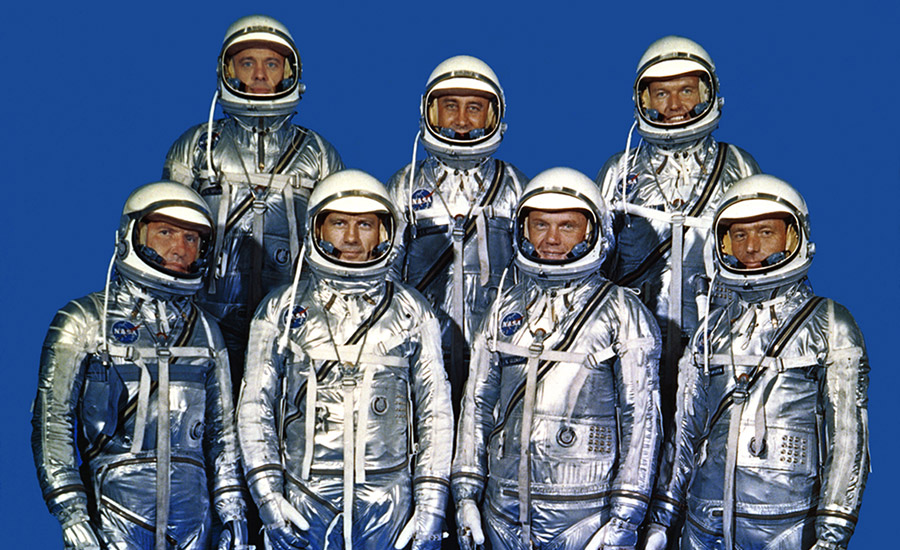
Image Credit: NASA
Mercury Astronauts
Mercury astronauts, the “Original Seven.” On April 9, 1959, NASA introduced its first astronaut class. Front row, left to right: Wally Schirra, Deke Slayton, John Glenn, Scott Carpenter; back row, Alan Shepard, Gus Grissom, and Gordon Cooper.
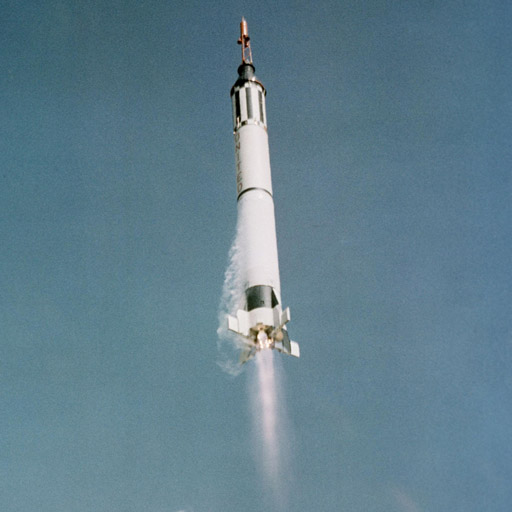
Image Credit: NASA
Freedom 7 mission
Liftoff of astronaut Alan Shepard Jr.’s Freedom 7 mission, powered by a Redstone rocket, May 5, 1961. Shepard became the first American in space, a flight that lasted 15 minutes, 28 seconds. He later made it to the Moon on Apollo 14.
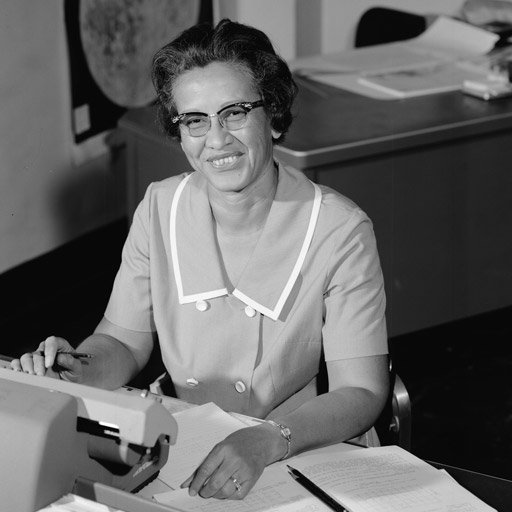
Image Credit: NASA/Langley Research Center
Katherine Johnson
NASA research mathematician Katherine Johnson did the trajectory analysis for Alan Shepard’s historic mission. Johnson worked at NASA’s Langley Research Center from 1953 to 1986. She and many other women made critical technical contributions to the space program.
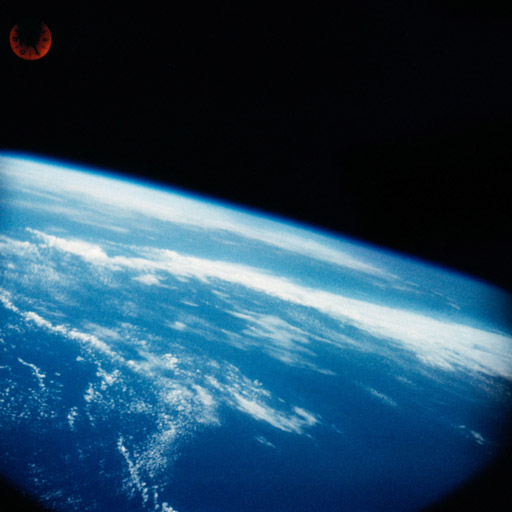
Image Credit: NASA
View of Earth
View of Earth from Shepard’s Freedom 7 Mercury capsule, a view of our planet that no American had ever seen before.
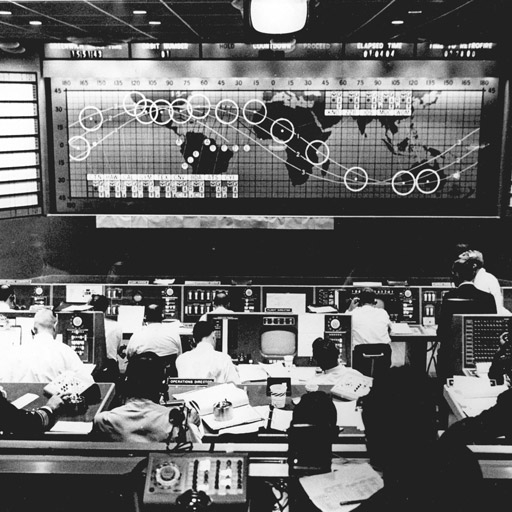
Image Credit: NASA
Mercury Mission Control
Mercury Mission Control, Flight Control Area. During Project Mercury, the front wall of the Flight Control Area featured a large world map display with the path to be followed by the capsule. A circle marked each station in the worldwide tracking network.

Image Credit: NASA
John Glenn
Astronaut John Glenn onboard the Friendship 7 Mercury spacecraft, Feb. 20, 1962. Glenn made history by becoming the first U.S. astronaut to orbit Earth.
The Gemini Program
The Gemini program primarily tested equipment and mission procedures and trained astronauts and ground crews for future Apollo missions to the Moon. The program’s main goals were: to test an astronaut’s ability to fly long duration flights (14 days); to understand how a spacecraft could rendezvous and dock with another vehicle in Earth orbit; to perfect re-entry landing methods; and to further understand the effects of longer spaceflights on astronauts. NASA selected “Gemini” because the word is Latin for “twins,” and the Gemini was a capsule built for two.
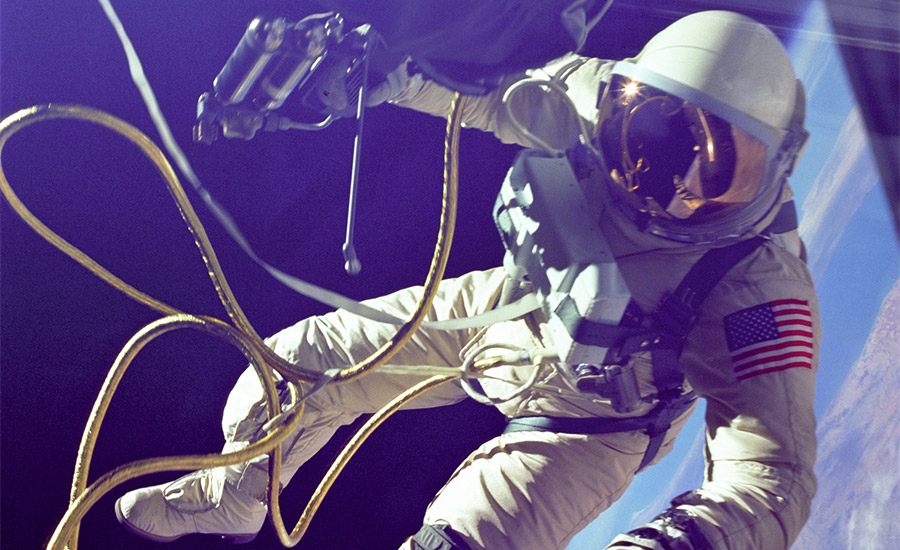
Image Credit: NASA
Spacewalk
Gemini IV spacewalk, June 3, 1965. NASA astronaut Ed White became the first American to walk in space.
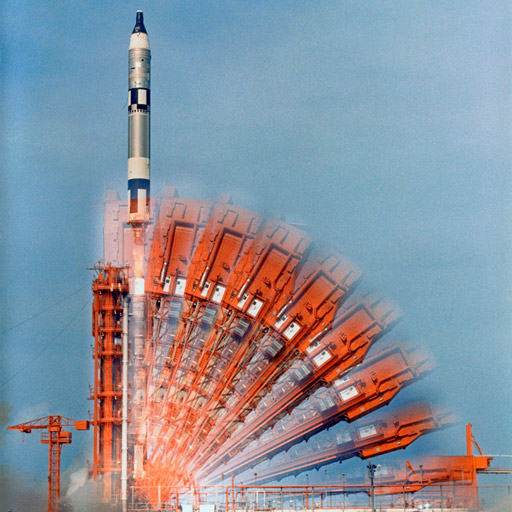
Image Credit: NASA
Gemini X
Time exposure image of Gemini X spacecraft, launched July 18, 1966. Astronauts John Young and Mike Collins carried out a three-day mission to rendezvous and dock in space with an Agena spacecraft that had lifted off 101 minutes earlier.
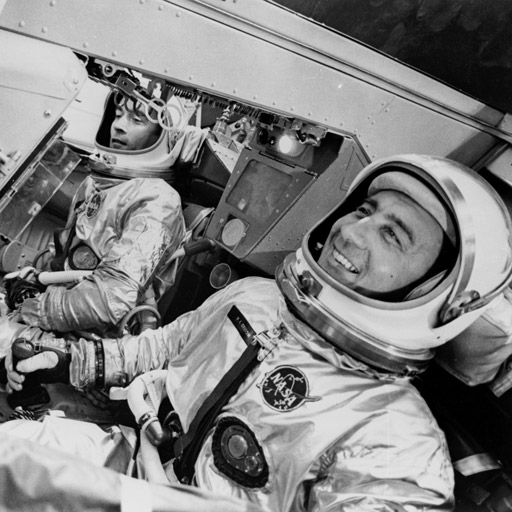
Image Credit: NASA/MSFC archives
Gemini III
Gemini III astronauts Gus Grissom and John Young (photographed in a spacecraft simulator), crewed the first human Gemini flight, March 23, 1965. This mission tested the new maneuverable spacecraft that let the astronauts control more of the flight.
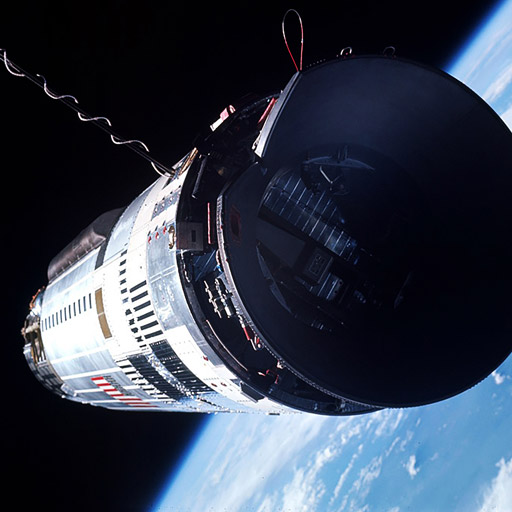
Image Credit: NASA/Buzz Aldrin
Gemini XII
The Agena target vehicle as seen from Gemini XII spacecraft, which docked with Agena on Nov. 11, 1966.
The Apollo Program
Exactly eight years, one month and 26 days after President Kennedy challenged Americans to reach for the Moon, Project Apollo landed the first humans on the lunar surface and returned them safely to Earth. The Apollo program also developed technology to meet other national interests in space, conducted scientific exploration of the Moon, and developed humanity’s capability to work in the lunar environment.
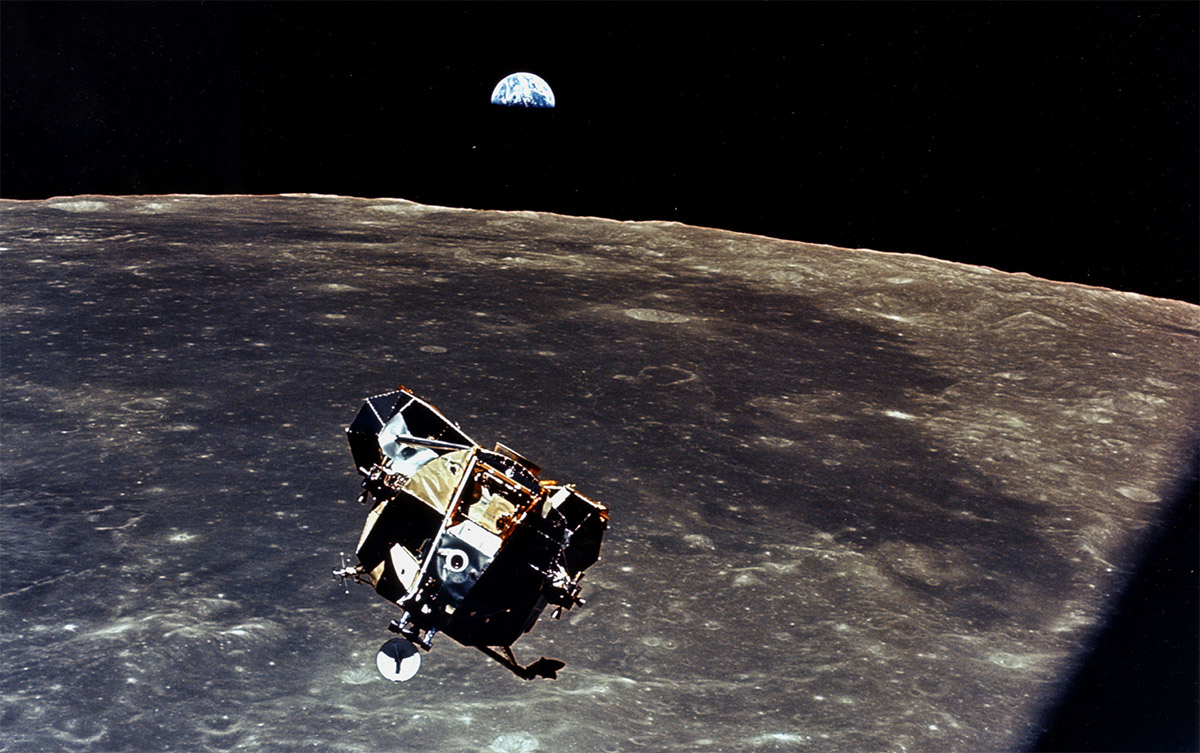
The ascent stage of the Apollo 11 lunar module approaching the command module for docking before the crew returned to Earth.Image Credit: NASA
The Apollo program was hit by tragedy as the first crew prepared to fly. On Jan. 27, 1967, fire swept through the Apollo 1 command module during a preflight test on the Cape Kennedy launch pad. Astronauts Gus Grissom, Ed White, and Roger Chaffee lost their lives. NASA was not deterred, but rather changed how things were done to ensure the safety and success of future missions.
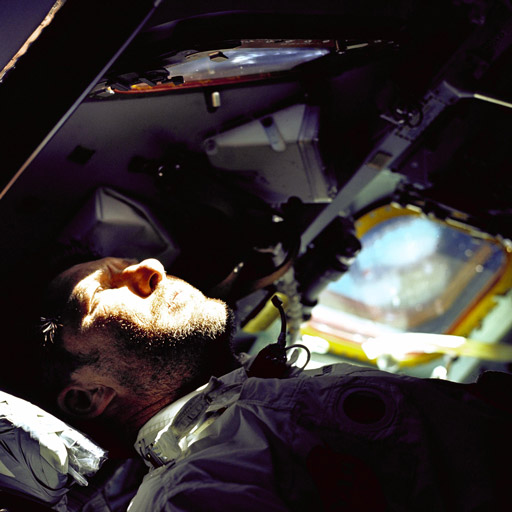
Image Credit: NASA
Apollo 7
Commander Wally Schirra looking out the rendezvous window in front of the commander's station of the Apollo 7 Earth orbital mission, Oct. 19, 1968. Fifty years ago, Apollo 7 transmitted the first live TV broadcast from a human U.S. spacecraft.

Image Credit: NASA
Apollo 8
The famous 'Earthrise' photo from Apollo 8, the first human mission to the Moon. On Christmas Eve, 1968, as one of the most turbulent, tragic years in American history drew to a close, millions around the world watched and listened as Apollo 8 astronauts Frank Borman, Jim Lovell and Bill Anders -- first humans to orbit another world – read from the Bible’s Book of Genesis.
Audio: Apollo 8 Christmas Eve
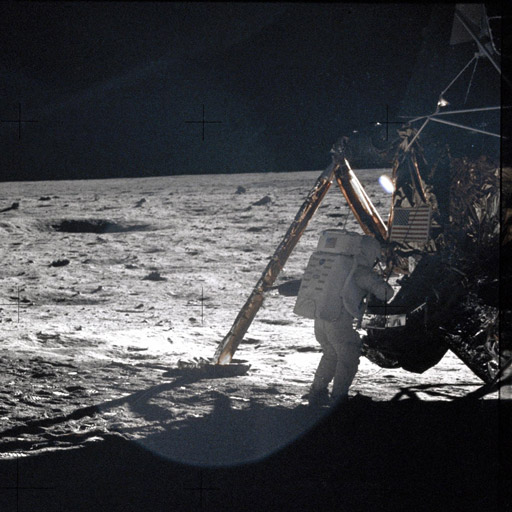
Image Credit: NASA
Apollo 11
On July 20, 1969, Apollo 11 Commander Neil Armstrong placed the first human footstep on the Moon. Here he’s shown working at an equipment storage area on the lunar module. This is one of the few photos that shows Armstrong during the moonwalk.
Audio: Apollo 11 One Small Step
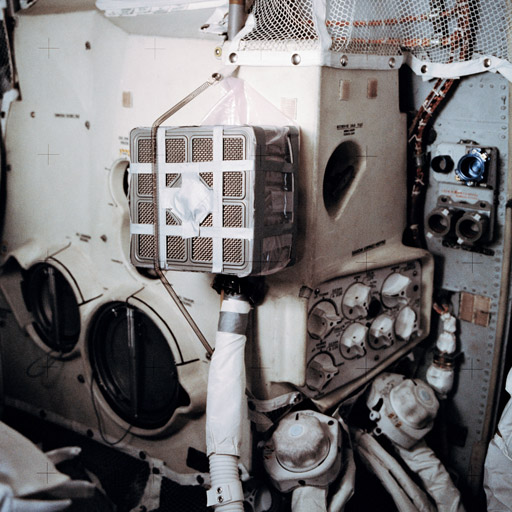
Image Credit: NASA
Apollo 13
A makeshift arrangement of equipment, parts and duct tape on the Apollo 13 Lunar Module (LM) saved the crew’s lives after an oxygen tank explosion in the Service Module left them with the LM to use as a “lifeboat.” Using materials only found on the spacecraft, NASA engineers on the ground designed and tested a system that removed carbon dioxide from the LM; the Apollo 13 crew then made the system onboard, April 17, 1970, and returned safely to Earth.
Skylab
In 1973, Skylab expeditions paved the way for the International Space Station. The four, windmill-like solar arrays were attached to the Apollo Telescope Mount. Observations of the Sun were one of this space lab program’s primary achievements.
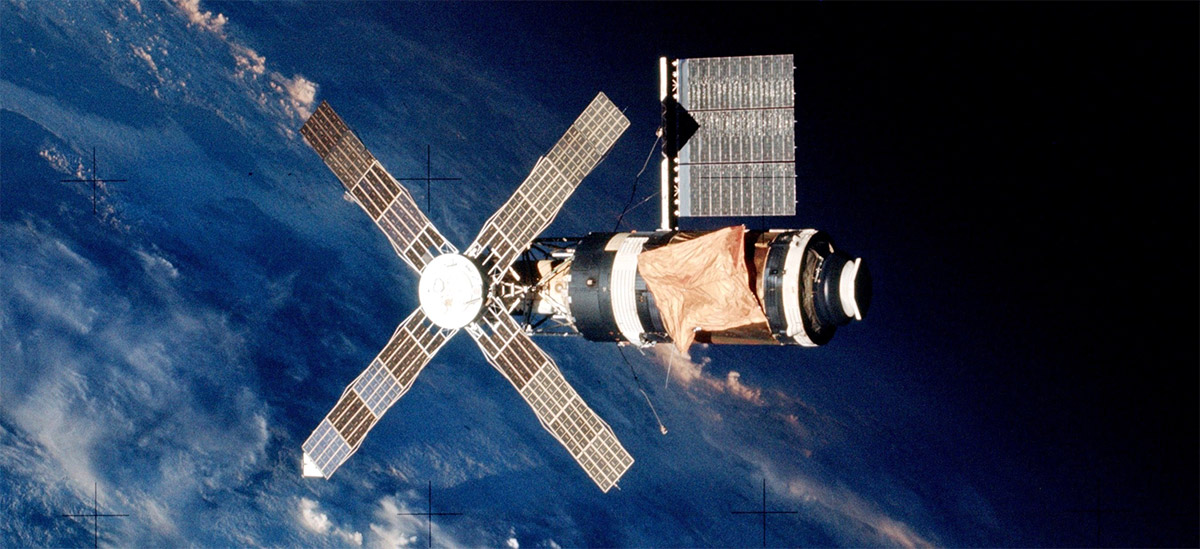
Image Credit: NASA
Apollo Soyuz Test Project
In the 1970s, U.S.-Soviet political tensions that had accelerated the space race began to thaw. Competition gave way to cooperation between the two nations with the Apollo-Soyuz Test Project. International collaboration among many nations would become the norm during the space shuttle era and current cooperation in human spaceflight with the International Space Station. These partnerships have taught us more about the universe, improved our lives at home, and expanded the possibilities for future exploration into deep space.
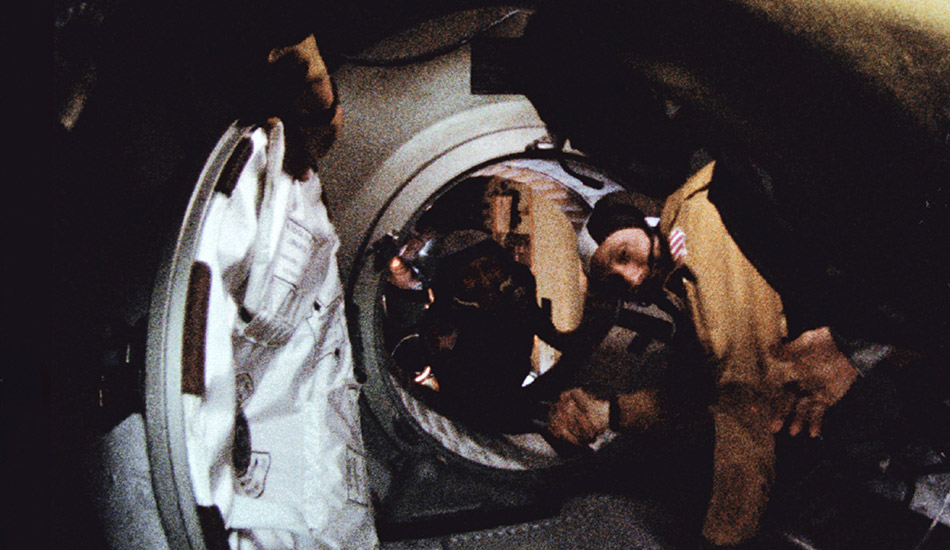
Image Credit: NASA
Handshake
Astronaut Tom Stafford (foreground) and cosmonaut Alexei Leonov make their historic handshake in space on July 17, 1975. The Apollo-Soyuz Test Project docked together U.S. and Soviet spacecraft and paved the way toward international partnerships in space.
Space Shuttle Era
Over 30 years, NASA's space shuttle fleet—Columbia, Challenger, Discovery, Atlantis and Endeavour—flew 135 missions and carried 355 different people to space. Humanity's first reusable spacecraft, the space shuttle carried people into orbit repeatedly; launched, recovered and repaired satellites; conducted cutting-edge research; and built the largest structure in space, the International Space Station. The space shuttle pushed the bounds of discovery ever farther, requiring not only advanced technologies but also the tremendous efforts of thousands of civil servants and contractors throughout NASA's field centers and across the nation. Tragically, NASA lost two crews of seven in the 1986 Challenger accident and the 2003 Columbia accident.
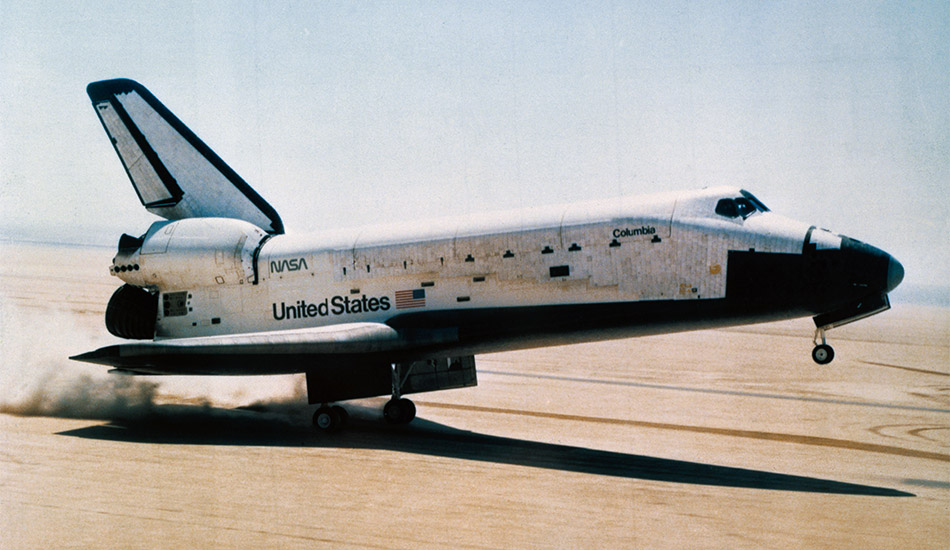
Space Shuttle Columbia, the world’s first reusable space vehicle, landing at NASA's Dryden Flight Research Center (now NASA's Armstrong Flight Research Center) at Edwards Air Force Base, California, April 14, 1981.Image Credit: NASA

Image Credit: NASA
Hubble Space Telescope
Deploying the Hubble Space Telescope from Space Shuttle Discovery’s cargo bay, April 25, 1990. A shuttle could carry several satellites into low-Earth orbit on one flight. Go see Discovery at the Smithsonian’s National Air and Space Museum’s Udvar-Hazy Center at Dulles International Airport.
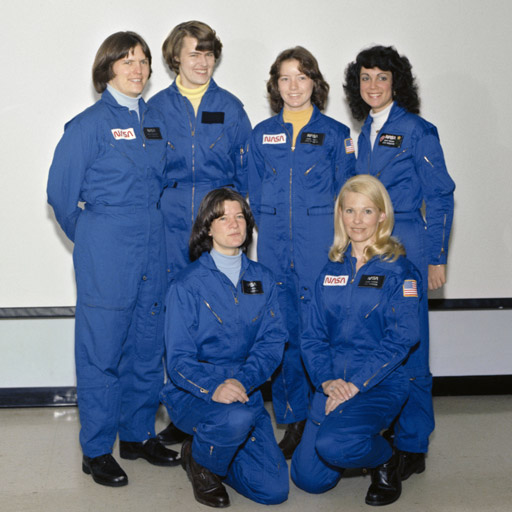
Image Credit: NASA
First Six Women
The first six women selected to be NASA astronauts, 1978: (back row, left to right) Kathy Sullivan, Shannon Lucid, Anna Fischer, Judy Resnik, (seated left to right) Sally Ride and Rhea Seddon. NASA’s 1978 class of astronauts also included the first African-Americans and the first Asian American. The shuttle brought diversity to space.
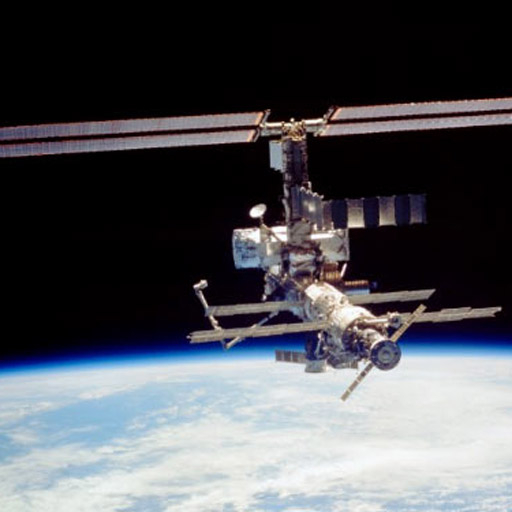
Image Credit: NASA
S0 Truss Structure
One of many steps in assembling the International Space Station, Space Shuttle Atlantis delivered the S0 Truss Structure (the big set of solar panels across the top of the picture), which the crew installed on top of the Destiny module.
Space Station Era
The International Space Station is a model for global cooperation and scientific advancements that is enabling growth of private industry in low-Earth orbit and development of new technologies to advance human space exploration. Built between 1998 and 2011, the space station has housed humans continuously since Nov. 2, 2000. Because molecules and cells behave differently in space, research in microgravity helps advance scientific knowledge. The space station is a U.S. National Laboratory, which the Center for the Advancement of Science in Space (CASIS) manages for research investigations that improve life on Earth. NASA has contracted with commercial companies SpaceX, Orbital ATK, and Sierra Nevada Corporation to deliver science investigations, cargo, and supplies to the crews living in space, and soon Boeing and SpaceX will transport astronauts to and from the station.

This picture of the International Space Station was photographed from the space shuttle Atlantis as the orbiting complex and the shuttle performed their relative separation in the early hours of July 19, 2011Image Credit: NASA

Image Credit: NASA
International Cooperation
Nine crew members gathered in the International Space Station’s Kibo laboratory represent four of the five participating space agencies. The station is a partnership of 15 nations through NASA, ESA (the European Space Agency), the Canadian Space Agency (CSA), the Japan Aerospace Exploration Agency (JAXA), and Roscosmos, the Russian Federal Space Agency. “Kibo” means “hope” in Japanese. All crew members speak English and Russian.

Image Credit: NASA
Resupply
A SpaceX Dragon resupply ship nearing its capture point about 10 meters away from the space station. American, Japanese, and Russian cargo spacecraft bring science investigations and supplies to the station about 10 times a year. They don’t go away empty handed— the Orbital ATK Cygnus, JAXA’s HTV, and Russian Progress ships take out the trash and burn up during reentry while the SpaceX Dragon lands in the Pacific Ocean to return science and hardware to researchers on Earth.

Image Credit: NASA
300th Day
American astronaut Scott Kelly (left) and Russian cosmonaut Mikhail Kornienko (right) celebrating their 300th day of working together in space, Jan. 21, 2016. The One–Year Mission helped identify and reduce the biomedical risks astronauts face during longer space exploration, a stepping stone to future missions to deep space.
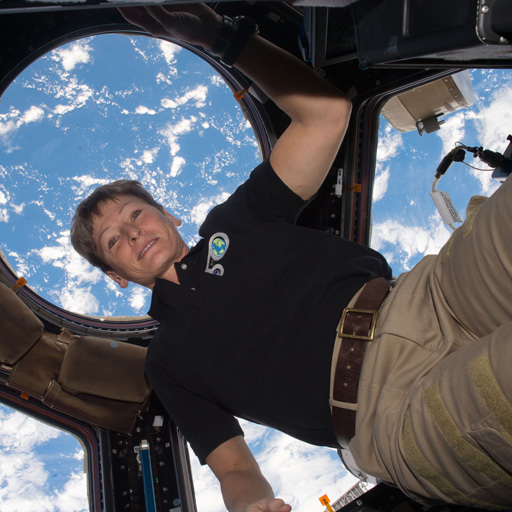
Image Credit: NASA
Peggy Whitson
Peggy Whitson holds the U.S. record for the most cumulative time spent in space: 665 days.

Image Credit: NASA
Luca Parmitano
European Space Agency astronaut Luca Parmitano, works with samples stored in the Minus Eighty-Degree Laboratory Freezer in the Destiny laboratory of the ISS. The crew members of each International Space Station expedition work on hundreds of experiments in biology, biotechnology, physical science and Earth science aboard the International Space Station, humanity’s only permanently occupied microgravity laboratory.

Image Credit: NASA
Fresh Fruit
Fresh fruit and vegetables are a special treat for astronauts, so nearly every cargo resupply mission includes fresh fruit and veggies—and sometimes ice cream!
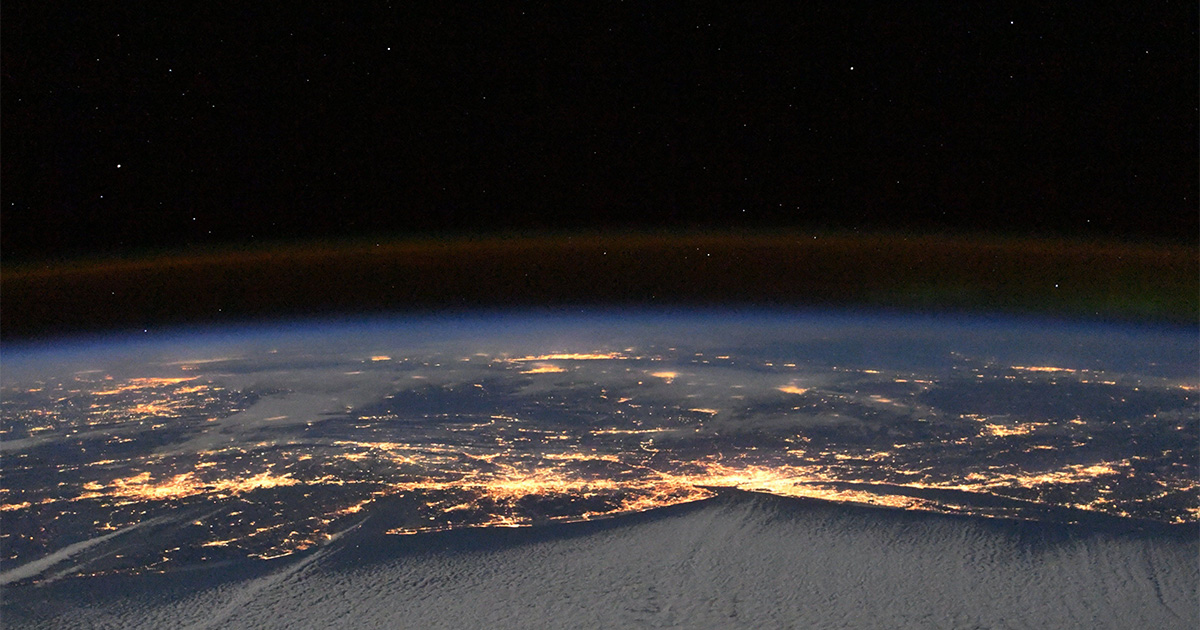
Image Credit: NASA
Spot the Station
Nighttime view of the eastern U.S. and Canada from the International Space Station. You can see the station too. Go to Spot the Station and sign up for text and email updates of sighting opportunities.

